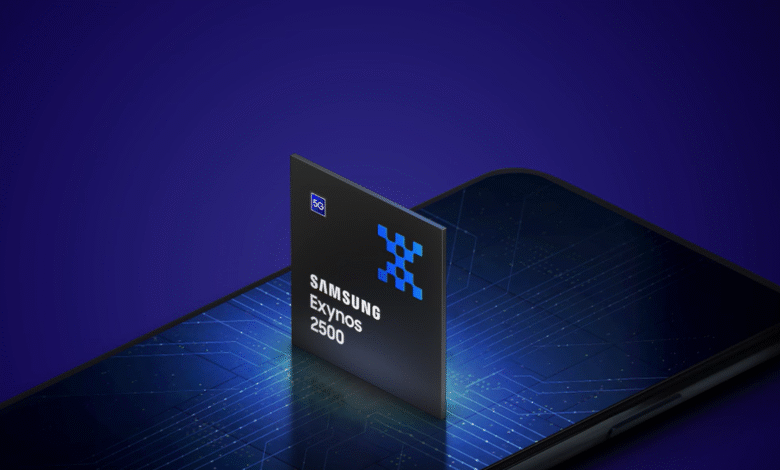Exynos 2600: Galaxy S26 Series Powerhouse?

Samsung Exynos 2600 SoC Spotted on Geekbench: A Deep Dive
The tech world is buzzing with anticipation as Samsung’s next-generation chipset, the Exynos 2600, has made an appearance on Geekbench. This sighting fuels speculation that it could be the powerhouse behind the upcoming Galaxy S26 series. Let’s delve into the details of this exciting development.
Geekbench Listing Reveals Key Specs
The Geekbench listing reveals the Exynos 2600, bearing model number S5E9965, sports a 10-core CPU configuration. This potent setup comprises:
- One high-performance core clocked at 3.55GHz
- Three performance cores running at 2.96GHz
- Six efficiency-focused cores operating at 2.4GHz
These specifications suggest a chip designed for both raw power and optimized power consumption, a crucial balance for modern smartphones.
Performance Benchmarks: Promising Potential
The Exynos 2600 achieved scores of 2,155 in the single-core test and 7,788 in the multi-core test. While these figures are promising, it’s important to note that they are likely preliminary. As Samsung continues to refine and optimize the chip, we can expect further performance improvements leading up to its official launch. The Xclipse 960 GPU is also listed. The variant appears to support Android 16 and 12GB of RAM, with possible support for up to 16GB of RAM.
Galaxy S26 Series: Exynos 2600 Exclusive to Europe?
A recent report suggests that Samsung might utilize the Exynos 2600 chipsets in its Galaxy S26 series, slated for release early next year. However, due to potential yield limitations, these versions might be exclusively available in European markets. Other global markets could continue to receive Galaxy S26 variants powered by Snapdragon SoCs. This potential regional disparity has sparked considerable debate among tech enthusiasts.
Snapdragon’s Reign in the Galaxy S25 Lineup
It’s worth noting that the entire Galaxy S25 lineup, including the Galaxy S25, Galaxy S25+, Galaxy S25 Ultra, and Galaxy S25 Edge, are all powered by Qualcomm’s Snapdragon 8 Elite SoC. This makes the prospect of the Exynos 2600 powering the S26 series even more intriguing.
Samsung’s Chipset Strategy: A Balancing Act
Samsung’s approach to chipsets has often involved a dual-sourcing strategy, utilizing both its in-house Exynos chips and Qualcomm’s Snapdragon SoCs in different regions. This strategy allows Samsung to diversify its supply chain and potentially optimize performance and cost based on regional market dynamics.
Exynos 2500: Predecessor’s Performance
Samsung’s recent Galaxy Z Flip 7 is powered by the Exynos 2500 SoC. This chip features a Cortex-X5 core at 3.3GHz, two Cortex-A725 cores at 2.74GHz, five more Cortex-A725 cores at 2.36GHz, and two Cortex-A520 cores at 1.8GHz. It’s claimed to offer a 15% performance boost over the Exynos 2400.
Key Differences and Advancements
| Feature | Exynos 2500 | Exynos 2600 (Rumored) |
|---|---|---|
| CPU Cores | 1x Cortex-X5, 2x A725, 5x A725, 2x A520 | 1x High-Performance, 3x Performance, 6x Efficiency |
| GPU | Unknown | Xclipse 960 |
| Manufacturing | 3nm | 3nm (Expected) |
| Target Devices | Galaxy Z Flip 7 | Galaxy S26 Series (Potentially) |
The Road Ahead
As we eagerly await the official unveiling of the Exynos 2600 and the Galaxy S26 series, the Geekbench listing offers a tantalizing glimpse into what Samsung has in store. Whether the Exynos 2600 will indeed power the S26 series, and in which markets, remains to be seen. However, one thing is certain: the competition in the high-end smartphone chipset market is heating up, and Samsung is determined to be a major player.
More to Consider
- Software Optimization: The true potential of the Exynos 2600 will depend heavily on Samsung’s software optimization efforts.
- Thermal Management: Efficient thermal management will be crucial to sustaining peak performance over extended periods.
- Competition: The Exynos 2600 will face stiff competition from Qualcomm’s Snapdragon offerings and other chipset manufacturers.
Conclusion
The Exynos 2600’s appearance on Geekbench has ignited excitement within the tech community. With its 10-core CPU and potential for significant performance gains, it represents a promising step forward for Samsung’s chipset ambitions. As we approach the launch of the Galaxy S26 series, all eyes will be on Samsung to see how this new chip performs in real-world scenarios.




